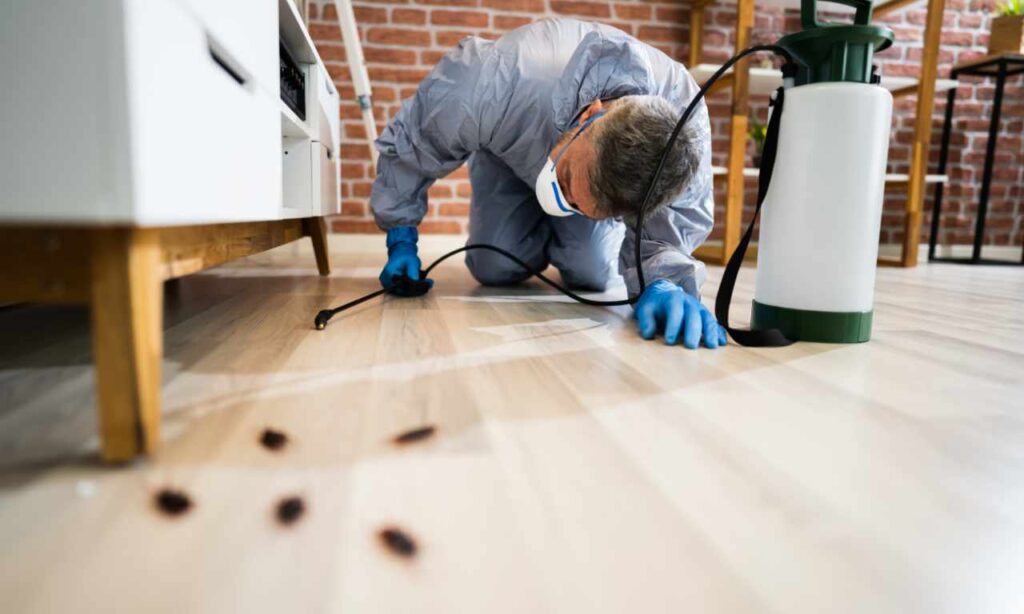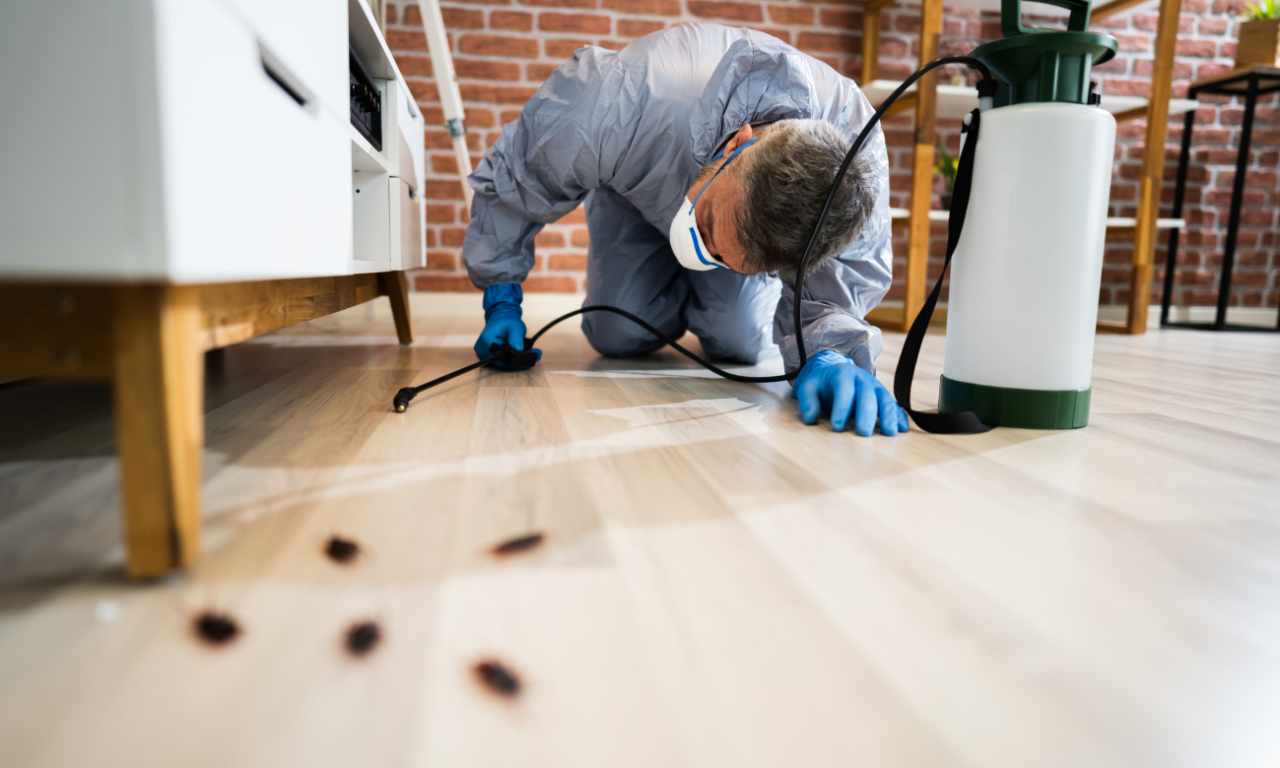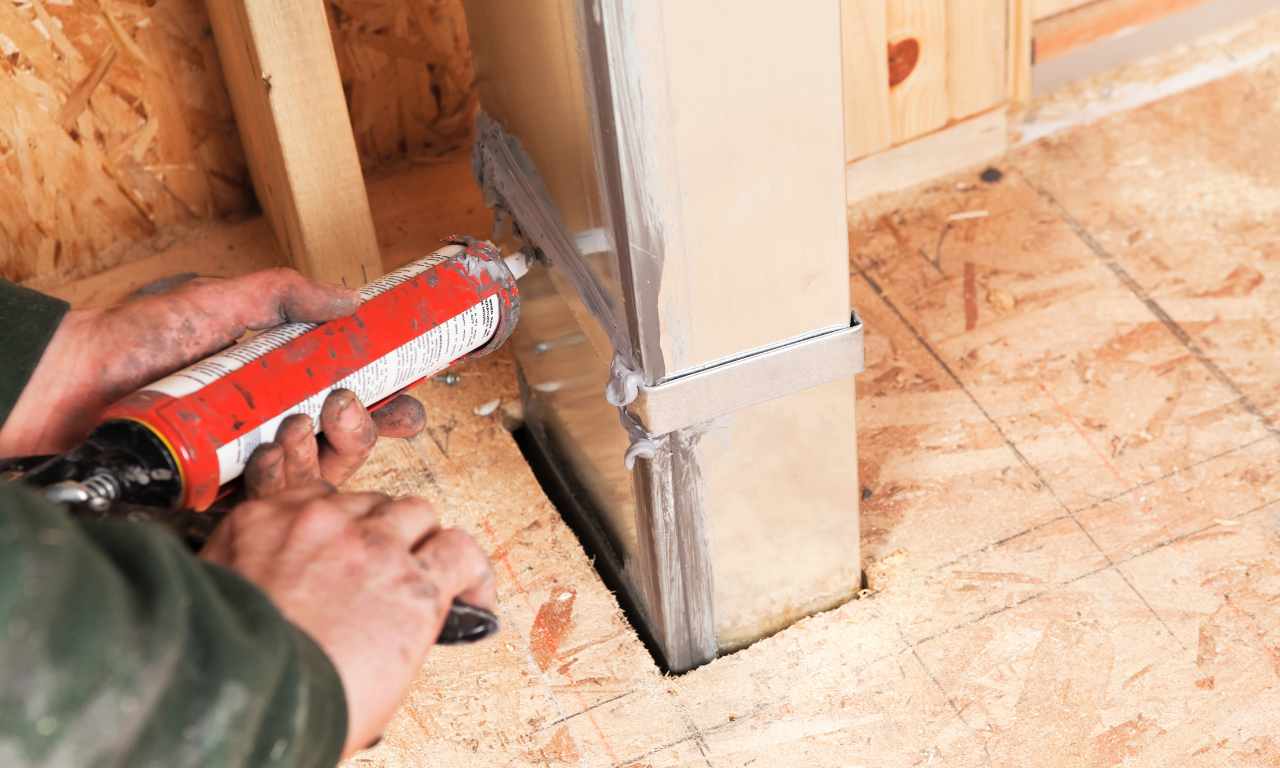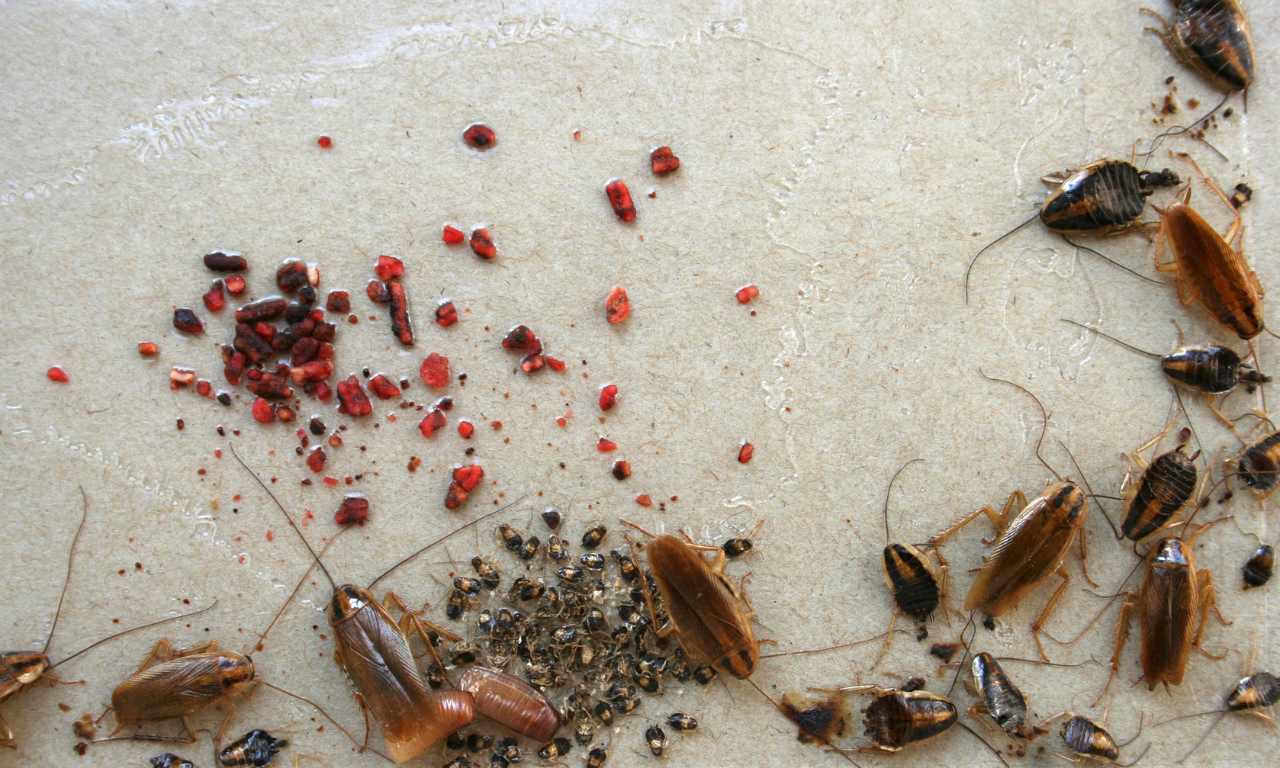
 It is not uncommon for people to see an increase in roaches after an exterminator has treated their property. This phenomenon is known as a “flushing effect,” where roaches that were previously hiding in cracks and crevices are forced out into the open as a result of extermination efforts.
It is not uncommon for people to see an increase in roaches after an exterminator has treated their property. This phenomenon is known as a “flushing effect,” where roaches that were previously hiding in cracks and crevices are forced out into the open as a result of extermination efforts.
When roaches are exposed to pesticides, they are either killed or driven to search for new hiding places. If they are able to find new hiding places before the pesticides kill them, they may temporarily be seen more frequently before eventually declining in numbers as more and more roaches are killed by the pesticide.
However, it is also important to note that an increase in roach sightings can also be due to a lack of effective treatment or incorrect application of the pesticides. For example, if the exterminator did not apply the pesticides to all of the roach hiding places, or if the roaches have developed resistance to the pesticides being used, the extermination efforts may not be effective in reducing the roach population.
In order to determine whether the increased roach activity is due to a flushing effect or a lack of effective treatment, it is important to closely monitor the situation and communicate with the exterminator. The exterminator may need to reapply the pesticides or use different methods to target the roaches and their hiding places.
How Long Will I See Roaches After Spraying?
The length of time you will see roaches after spraying depends on several factors, including the type of pesticide used, the severity of the infestation, and the measures you take to prevent future infestations.
In general, you can expect to see a decline in the number of roaches within the first week after spraying. However, it is not uncommon to see roaches for several weeks or even months after treatment. This is because it can take time for the pesticides to fully take effect and kill all of the roaches, and new roaches may continue to enter your home from the outside.
The type of pesticide used can also affect the length of time you will see roaches after treatment. Some pesticides are more effective in killing roaches than others, and some may take longer to take full effect. For example, residual pesticides, which leave a residue that continues to kill roaches for several weeks after application, may result in a longer-lasting decline in the roach population compared to non-residual pesticides.
The severity of the infestation can also impact the length of time you will see roaches after treatment. In a severe infestation, it may take longer for the pesticides to fully take effect and eliminate all of the roaches. In addition, if the infestation has been present for a long time, there may be a large number of roaches that have built up a resistance to the pesticides being used.
In order to minimize the length of time you will see roaches after treatment, it is important to take measures to prevent future infestations. This may include cleaning up food and water sources, sealing cracks and crevices to prevent roaches from entering your home, and removing cluttered areas that may provide shelter for roaches.
It is also important to monitor the situation and communicate with your exterminator to determine if additional treatment is necessary. If you continue to see roaches after several weeks, it may be necessary to reapply the pesticides or switch to a different type of pesticide to effectively eliminate the roaches.
How Many Times Does An Exterminator Have To Spray For Roaches?
The number of times an exterminator has to spray for roaches can vary depending on several factors, including the severity of the infestation, the type of pesticide used, and the measures taken to prevent future infestations.
In general, one treatment is often enough to effectively eliminate a light to moderate roach infestation. However, in severe infestations, multiple treatments may be necessary to completely eliminate the roaches. In some cases, it may take several weeks or even months to fully eliminate a severe infestation, depending on the level of resistance the roaches have built up to the pesticides being used.
The type of pesticide used can also affect the number of times an exterminator has to spray. Some pesticides, such as residual pesticides, can continue to kill roaches for several weeks after application, reducing the need for additional treatments. On the other hand, non-residual pesticides may require more frequent treatments to maintain control of the roach population.
In addition to the type of pesticide used, the measures taken to prevent future infestations can also impact the number of times an exterminator has to spray. For example, if you take steps to eliminate food and water sources, seal cracks and crevices to prevent roaches from entering your home, and remove cluttered areas that may provide shelter for roaches, it may be possible to minimize the need for additional treatments.
It is important to closely monitor the situation and communicate with your exterminator to determine if additional treatments are necessary. If you continue to see roaches after several weeks, it may be necessary to reapply the pesticides or switch to a different type of pesticide to effectively eliminate the roaches.
Can Extermination Get Rid Of Other Pests?
Yes, extermination can get rid of other pests in addition to roaches. The type of pest and the severity of the infestation will determine the methods used to eliminate the pests.
A professional exterminator can help get rid of a wide range of pests, including ants, spiders, mice, rats, termites, bed bugs, and many others. The exterminator will first assess the situation to determine the type of pest and the severity of the infestation. Based on this information, the exterminator will develop a customized plan to eliminate the pests, which may include a combination of chemical and non-chemical treatments.
Chemical treatments, such as the use of pesticides, are often used to eliminate pests. The type of pesticide used will depend on the type of pest being treated and the severity of the infestation. For example, some pesticides are specifically designed to target certain pests, such as bed bugs or termites, while others are more broadly effective against a range of pests.
In addition to chemical treatments, an exterminator may also use non-chemical methods to eliminate pests. For example, the exterminator may use physical exclusion methods, such as sealing cracks and crevices, to prevent pests from entering your home. The exterminator may also use traps and baits to eliminate pests, or may introduce predators, such as birds or bats, to control the pest population.
How To Stop Re Occurrence Of Cockroaches After Extermination?
 Getting rid of a cockroach infestation is just the first step in the process of keeping your home cockroach-free. To prevent reoccurrence of cockroaches after extermination, you will need to take some additional steps to prevent future infestations. Here are some tips for stopping the reoccurrence of cockroaches:
Getting rid of a cockroach infestation is just the first step in the process of keeping your home cockroach-free. To prevent reoccurrence of cockroaches after extermination, you will need to take some additional steps to prevent future infestations. Here are some tips for stopping the reoccurrence of cockroaches:
- Sanitation: Cockroaches are attracted to food and water, so it’s important to keep your home clean and free of crumbs, spills, and other sources of food. Regularly wash dishes, store food in sealed containers, and sweep or vacuum floors and surfaces to eliminate food debris.
- Eliminate Moisture: Cockroaches thrive in moist environments, so it’s important to eliminate any sources of excess moisture in your home. Repair leaky faucets, fix any plumbing problems, and use a dehumidifier if necessary.
- Seal Cracks and Crevices: Cockroaches can enter your home through small cracks and crevices, so it’s important to seal these areas to prevent them from entering. Use caulk or weather stripping to seal around doors and windows, and repair any holes or cracks in walls and floors.
- Store Trash Properly: Cockroaches are attracted to garbage, so it’s important to store trash properly. Use tight-fitting lids on trash cans and regularly remove trash from your home to reduce the risk of attracting cockroaches.
- Reduce Clutter: Cockroaches love to hide in cluttered areas, so it’s important to reduce clutter in your home. Remove piles of paper, clothes, and other items that provide hiding places for cockroaches.
- Regular Pest Control: Regular pest control treatments can help prevent the reoccurrence of cockroaches after extermination. A professional exterminator can provide you with a customized plan to keep your home cockroach-free.
- Educate Yourself: Finally, it’s important to educate yourself about cockroaches and their behavior. Understanding how cockroaches enter your home and what attracts them can help you take steps to prevent future infestations.
By following these steps, you can help prevent the reoccurrence of cockroaches after extermination and keep your home free of these pests. However, it’s important to remember that even with the best preventative measures, cockroaches can still find their way into your home. If you do experience a reoccurrence of cockroaches, it’s important to work with a professional exterminator to quickly eliminate the problem and prevent further infestations.
How To Know Extermination Is Working?
 Determining if your extermination efforts are working can be a challenge, but there are several signs you can look for to determine if your extermination efforts are succeeding. Here are some ways to determine if extermination is working:
Determining if your extermination efforts are working can be a challenge, but there are several signs you can look for to determine if your extermination efforts are succeeding. Here are some ways to determine if extermination is working:
- Reduction in Cockroach Sightings: If you were previously seeing a lot of cockroaches in your home, a reduction in the number of cockroaches you see can be a good sign that extermination efforts are working. However, keep in mind that some cockroaches may continue to hide during the day and come out at night, so a lack of sightings doesn’t necessarily mean the problem has been completely eliminated.
- Decreased Cockroach Feces: Cockroach feces can be a sign of a cockroach infestation. If you notice a decrease in the amount of feces, this may indicate that the extermination efforts are working.
- Reduction in Cockroach Odors: Cockroaches can produce a musty, unpleasant odor. If you notice a decrease in the odor, this may indicate that the extermination efforts are working.
- Disappearance of Egg Cases: Cockroaches lay egg cases, which can be a sign of an infestation. If you notice that the egg cases have disappeared, this may indicate that the extermination efforts are working.
- Reduction in Damage: Cockroaches can cause damage to food packaging, books, and other items in your home. If you notice a reduction in the amount of damage, this may indicate that the extermination efforts are working.
- Professional Evaluation: A professional exterminator can evaluate the situation and provide you with a more accurate assessment of the effectiveness of the extermination efforts.
It’s important to keep in mind that extermination efforts can take time to be fully effective. It may take several weeks or even months to see a significant reduction in the cockroach population. In some cases, multiple treatments may be necessary to completely eliminate the infestation.
If you are using over-the-counter extermination products, it’s important to follow the instructions carefully and reapply the product as directed. If you are working with a professional exterminator, it’s important to follow their recommendations and to communicate any concerns you have about the effectiveness of the extermination efforts.
In conclusion, determining if extermination is working can be a challenge, but by paying attention to the reduction in cockroach sightings, decreased cockroach feces, reduction in cockroach odors, disappearance of egg cases, and reduction in damage, you can determine if extermination efforts are working. If you have any concerns about the effectiveness of the extermination efforts, it’s important to communicate with a professional exterminator.
Welcome to my blog. I have been doing pest control for years since my house, garden and pets were always attacked by various kinds of pests and as a result I had to know proper pest control techniques that works. In this blog I share all the tips and tricks that I know and I hope you’ll find it helpful.
